Birthstone
Birthstones are precious gemstones that hold cultural and historical significance, each associated with a specific month and believed to bring good fortune and protection to those born within that month. The tradition of wearing a gemstone corresponding to one’s birth month dates back to ancient times, with roots in various cultures and civilizations. These stones are thought to possess unique metaphysical properties, symbolizing qualities such as strength, love, and prosperity. The concept of birthstones has evolved over the centuries, and today, they serve as not only personal adornments but also as meaningful and cherished gifts. The practice of wearing a birthstone is a timeless tradition that continues to resonate, connecting individuals to their birth month and adding a touch of personalized elegance to jewelry. Whether embraced for their perceived mystical attributes or appreciated for their aesthetic appeal, birthstones continue to captivate and inspire people across the globe.
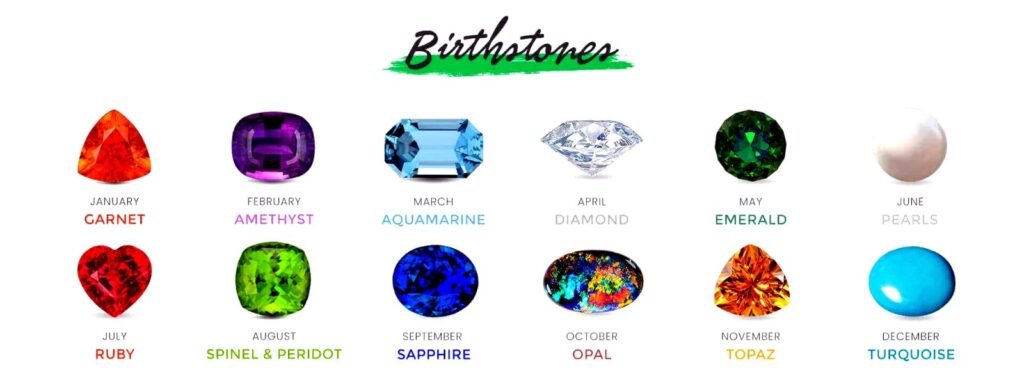
January
Birthstone – Garnet

History – The garnet’s enduring history traces back to the Bronze Age, evidenced by remnants of garnet jewelry. Egyptians in 3100 BC used garnet inlays, considering it the symbol of life. Romans valued garnet as a talisman in battle, and ancient healers praised its healing powers. Garnets adorned signet rings in ancient Rome and were favored by medieval nobility. The Victorians popularized garnets with pomegranate-inspired designs. Today, garnets, with a range of colors, adorn various jewelry styles, from rings to tiaras. Rare green or blue garnets make striking pendants or earrings.
What does it mean – The name garnet derives from the Latin word for grain due to the similarity between their rounded crystals and a pomegranate’s seeds. Garnet is the official birthstone for January and signifies protection, friendship, trust, commitment, and love. Garnet is also said to keep the wearer safe during travel.
Benefit – Garnets are often given as gifts before travel, believed to offer protection. Beyond their aesthetic appeal, they are thought to heal broken bonds of love, fostering emotional connections. Additionally, garnets are associated with treating melancholy and depression by acting as heart and blood stimulants. Their vibrant red hue symbolizes vitality, energizing the spirit and promoting emotional balance. Whether worn for personal adornment or given as a thoughtful gesture, garnets carry not only beauty but also meaningful associations, making them more than just gemstones but bearers of emotional and spiritual significance.
Known for – Garnet symbolism is rich and varied. Cultures all over the world have prized this gemstone for its beautiful colors and durability. The traditional January birthstone has also inspired many legends and popular associations with love, friendship, light, and vitality.
February
Birthstone – Amethyst

History – The history of the amethyst gemstone dates back to ancient times, where it was valued by cultures such as the Egyptians, Greeks, and Romans. The name “amethyst” comes from the Greek word “amethystos,” meaning “not intoxicated,” reflecting its believed power to prevent drunkenness. Throughout history, amethyst has been associated with royalty and spiritual properties, symbolizing sobriety and mental clarity. A significant resurgence in popularity occurred in the 19th century with the discovery of large deposits in Brazil. Today, amethyst remains highly sought after for its vibrant purple hues and spiritual connotations, adorning various jewelry pieces.
What does it mean – A gemstone commonly associated with royalty thanks to its purple coloring, amethysts have been used to symbolize deep love, happiness, humility, sincerity, and wealth for centuries
Benefit – Amethyst has been worn as a protection amulet. This gemstone is reputed to fend off negativity and safeguard you from bad luck. Amethyst should be worn by those who want to advance in their spiritual awareness. One of the most important stones in the healing collection is amethyst.
Known for – Often viewed as a stone of peace, some believe amethyst’s calming presence produces soothing dreams by bringing the dreamer more in tune with the Divine. This clarity and peacefulness also extends to the waking mind. Amethysts are said to help the mind flow freely in both mental and metaphysical dimensions
March
Birthstone – Aquamarine
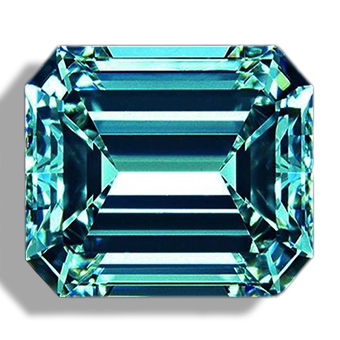
History – The history of the amethyst gemstone dates back to ancient times, where it was valued by cultures such as the Egyptians, Greeks, and Romans. The name “amethyst” comes from the Greek word “amethystos,” meaning “not intoxicated,” reflecting its believed power to prevent drunkenness. Throughout history, amethyst has been associated with royalty and spiritual properties, symbolizing sobriety and mental clarity. A significant resurgence in popularity occurred in the 19th century with the discovery of large deposits in Brazil. Today, amethyst remains highly sought after for its vibrant purple hues and spiritual connotations, adorning various jewelry pieces.
What does it mean – Aquamarine’s name comes from the Latin for seawater, and ancient mariners claimed the gem would calm waves and keep sailors safe at sea. This March birthstone was also thought to bring happiness in marriage.
Benefit –Wearing Aquamarine Jewelry aids in gaining understanding, honesty, discipline, and wisdom. It eases nervousness, calms the mind, lessens anxiety, and also treats the signs of retained fluids.
Known for –It has historically been used a symbol for youth and happiness due to its color, which has also, along with its name, made Western culture connect it with the ocean. Ancient Romans believed that aquamarine could protect people who are traveling across the sea; they also used aquamarine to prevent illnesses.
April
Birthstone –Diamond

History – The history of diamonds spans millennia, with origins in ancient India. Revered by the Greeks as tears of the gods, diamonds symbolized strength during the Middle Ages. In the 15th century, they gained popularity in European jewelry, and the tradition of diamond engagement rings reportedly began in 1477. The 19th century saw diamond mining expand in South Africa, with De Beers shaping the market. Innovations like the modern brilliant cut emerged in the 20th century, enhancing the stone’s brilliance. Today, diamonds signify love and luxury, remaining highly coveted for engagement rings and exquisite jewelry.
What does it mean – Over the centuries, the diamond birthstone was thought to be an antidote to poison and provide protection against the plague. Some claim that it is a boon for longevity, strength, beauty and happiness. In addition to being the April birthstone, diamond is the gift of choice for the 60th and 75th wedding anniversaries.
Benefit – Diamonds can increase creativity and positive feelings and alleviate nervousness. It can calm your mind and bring you inner peace. One of the common diamond stone benefits is that it can attract success towards the wearer and has healing properties that are beneficial for the heart and other organs.
Known for –diamond, a mineral composed of pure carbon. It is the hardest naturally occurring substance known; it is also the most popular gemstone. Because of their extreme hardness, diamonds have a number of important industrial applications.
May
Birthstone –Emerald
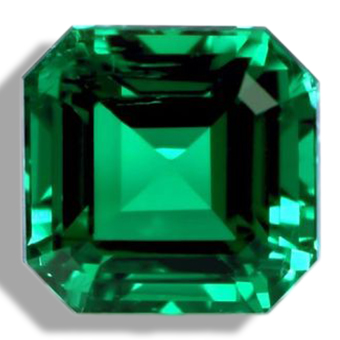
History – Emeralds have been cherished since ancient times, with early discoveries in Egypt around 330 BCE. The gem became a symbol of fertility for the Egyptians and later adorned Cleopatra’s jewelry. Highly valued by the Incas and Aztecs, emeralds continued to be a favorite among European royalty in the Middle Ages. In the 16th century, the discovery of large deposits in South America, particularly in Colombia, increased their popularity in Europe. Today, emeralds are admired for their stunning green hue and historical significance, symbolizing love and protection while gracing various jewelry pieces with timeless beauty.
What does it mean – As the birthstone for May, the emerald, a symbol of rebirth, is believed to grant the owner foresight, good fortune, and youth. Emerald, derived from the word “smaragdus,” means, quite literally, “green” in Greek.
Benefit – The soothing green color of emerald is associated with emotional healing and well-being. It is believed to calm the mind, alleviate stress, and promote a sense of inner peace. Wearing an emerald can be particularly beneficial for individuals dealing with anxiety, as it instills a sense of tranquility and balance.
Known for –Emerald symbolism encompasses not only royalty but also wit, eloquence, and foresight. “The Jewel of Kings” also serves as the May birthstone. Whatever its supposed mystical properties, this gem has long been regarded as a superior jewel.
June
Birthstone –Moonstone
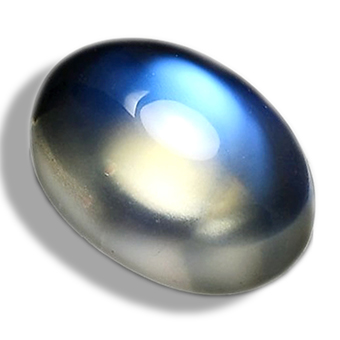
History – The moonstone, with its captivating moonlit sheen, holds a rich history steeped in mysticism and reverence by civilizations like the Romans, Greeks, and Hindus. Romans believed it to be solidified moonlight, while Hindus considered it sacred, associated with their deities. In India, moonstone was prized for its metaphysical properties, often incorporated into jewelry, including talismans and amulets, believed to bring protection and positive energy. Today, the moonstone remains cherished for its aesthetic appeal and cultural significance, adorning jewelry with its timeless connection to mysticism.
What does it mean – This June birthstone has been associated with both the Roman and Greek lunar deities. Hindu mythology claims that it is made of solidified moonbeams. Moonstone is often associated with love, passion and fertility; it is believed to bring great luck.
Benefit – Moonstone is thought to be an emotional healer and will help you discover stability while fostering feelings of power. Moonstone Jewelry helps you maintain emotional equilibrium and gives you self-assurance in any circumstance. Those who struggle with rage issues would feel at ease and peaceful after using moonstone.
Known for –People have associated moonstones with fertility, love, protection, and, of course, the Moon. Jewelry lovers, especially royalty, have highly valued these gems for centuries
July
Birthstone –Ruby

History – Rubies have a rich history spanning centuries and diverse cultures. Revered for their vibrant red hue, they were believed to possess protective powers and bring good fortune in ancient civilizations like India, Burma, and China. In India, rubies were dubbed the “king of precious stones,” symbolizing passion and protection. Burmese warriors considered rubies as invincible talismans, while in China, they were associated with wealth and success. European royalty prized rubies in the medieval era as symbols of love and power, adorning crowns and regalia. Today, rubies remain highly sought after for their intense red color and are cherished symbols of passion, courage, and enduring love in fine jewelry
What does it mean – Long associated with the life force blood, ruby was a symbol of power and youthful energy in Indian jewelry. In past centuries, some believed this birthstone for July could predict misfortune or danger, and others claimed it would cure inflammatory diseases and soothe anger.
Benefit –Wearing a high-quality ruby can enhance confidence, increase vitality, and improve leadership qualities. It is also believed to promote creativity, protect against negative energies, and attract career opportunities. Ruby can strengthen relationships and promote emotional balance
Known for –Many cultures have long considered ruby a stone of kings. Not surprisingly, ruby symbolism and lore have many associations with power and wealth. Possessing a ruby purportedly benefited and protected the owner’s estates and assisted in the accumulation of wealth.
August
Birthstone –Peridot
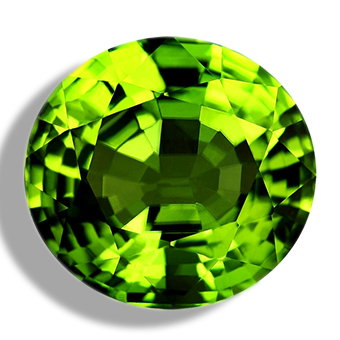
History – The peridot gemstone has a rich history dating back to ancient Egypt, where it was revered as the “gem of the sun” for its distinctive green hue. Cleopatra was known to wear peridot jewelry for its supposed protective qualities against evil spirits. Sourced from the Red Sea’s Island of Topazios, peridot gained popularity in Europe during the Baroque period and experienced a resurgence in the Middle Ages, especially in religious artifacts. The Victorian era saw a renewed interest in peridot, and today it remains cherished for its vibrant green color, symbolizing renewal and protection in various forms of jewelry.
What does it mean – Peridot is associated with strength and balance, it is believed to bring peace, health, and rest – by harmonizing the mind and body. It is also thought to boost creativity and improve your mood.
Benefit –Peridot is known to provide you with good health and healing. You would gain strength, metabolism, and tissue and cell regeneration if you wore Peridot Jewelry. Also, this gem is thought to regulate your endocrine and adrenal systems.
Known for –Known as the stone of compassion, peridot is believed to bring good health, restful sleep and peace to relationships by balancing emotions and mind. This friendly bright green stone also has the uncanny ability to inspire eloquence and creativity; it also brings delight and good cheer.
September
Birthstone –Sapphire
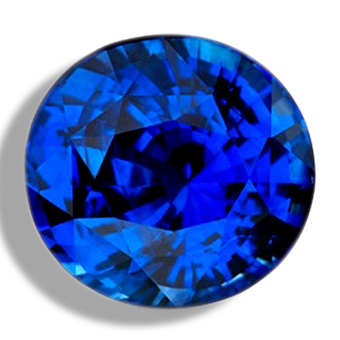
History – The sapphire’s history is steeped in symbolism and enduring appeal. Recognized for centuries as a symbol of wisdom, royalty, and divine favor, sapphires have played significant roles in various cultures. From ancient Persians believing the Earth rested on a giant sapphire to medieval clergy using them for spiritual enlightenment, and European royalty cherishing them as emblems of wisdom, the gemstone’s allure endured. In the 18th century, sapphires gained romantic connotations when Napoleon Bonaparte gifted one to Josephine. Today, sapphires remain highly prized for their deep blue hue and durability, adorning jewelry as symbols of timeless elegance and lasting love
What does it mean – The September birthstone has traditionally symbolized sincerity, truth, faithfulness and nobility. For countless centuries, sapphire has adorned royalty and the robes of the clergy.
Benefit –It possesses healing properties, promoting mental clarity and intuition, and benefiting eye health and headaches. The gemstone also aids in advancing political aspirations, improving communication abilities, and emotional stability
Known for –Sapphire symbolism encompasses diverse subjects in many cultures. Traditionally, people have prized these gems for their celestial blues and violets. These beautiful colors have helped the stone garner many mystical associations.
October
Birthstone –Opal

History – Opals have a rich history dating back to ancient times. The Romans associated opals with hope and purity, while the Greeks linked them to the goddess of love. In Arabic lore, opals were believed to fall from the heavens in flashes of lightning, carrying the powers of both fire and water. During the Middle Ages, opals symbolized faithfulness and confidence. In the 19th century, superstitions arose, but the discovery of high-quality opals in Australia in the late 19th century revitalized their popularity. Today, opals are cherished for their captivating play-of-color, symbolizing hope, purity, and the magical allure of iridescence throughout history.
What does it mean – Bedouins once believed opal held lightning and fell from the sky during thunderstorms. Ancient Greeks thought opals bestowed the gift of prophesy and protection from disease. Europeans long maintained opal to be a symbol of purity, hope and truth.
Benefit –Because opal is known as a stone of positive transformation, it is believed that wearing it may help you find the strength to look inwards and confront any negative emotions that may be lingering. The opal helps to bring clarity to an unclear situation or feeling.
Known for –Opal has always been associated with love and passion, as well as desire and eroticism. It is a seductive stone that intensifies emotional states and releases inhibitions. It can also act as an emotional stabilizer. Wearing an opal is said to bring about loyalty and faithfulness.
November
Birthstone –Topaz
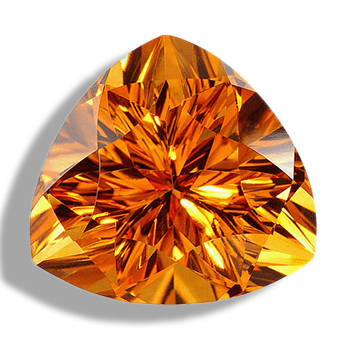
History – The history of topaz is rich and diverse. Its name is believed to come from the Sanskrit word “tapas,” meaning fire. In ancient times, the Greeks, Romans, and Egyptians highly valued topaz, associating it with the Sun God Ra. During the Middle Ages, it was believed to have healing properties. In the 18th century, large deposits in Brazil, especially the pinkish-orange Imperial Topaz, gained popularity. Today, topaz remains cherished for its brilliance and versatility in jewelry, with its history reflecting a range of cultural beliefs and uses.
What does it mean – The topaz birthstone symbolizes love and affection, and is said to bestow strength and intelligence on the person who wears it, according to the Old Farmer’s Almanac, and a gift of blue topaz is said to be a promise of love and fidelity
Benefit –The Topaz is amazing for releasing your inner creative. The Topaz is known for its soothing and calming effects. Wearing this stone will help you have the confidence to rise to any occasion your heart desires. Anyone wearing the Topaz is on the path to good health and fortune.
Known for –Through the ages, topaz has been popularly associated with wealth. However, topaz symbolism and lore has also covered many other areas, such as health, love, and astrology. It’s also the traditional November birthstone.
December
Birthstone –Turquoise

History – The history of turquoise spans millennia, treasured by ancient civilizations like the Egyptians and Persians. Revered for its vivid blue-green color, turquoise held spiritual significance, symbolizing protection and power. Native American cultures, particularly the Navajo and Pueblo peoples, also valued turquoise for its sacred and healing properties, using it in jewelry and ceremonial objects. Traded along ancient routes, turquoise gained popularity in medieval Europe and saw a resurgence during the Renaissance. Today, turquoise remains a sought-after gemstone, admired for its vibrant color and cultural history, gracing various forms of contemporary jewelry.
What does it mean – The word turquoise dates back to the 13th century, from the French expression ‘pierre tourques’, referencing the stone’s journey from Turkey to Europe. Today, the December birthstone is associated with meanings of freshness, femininity, tranquility, intuition, serenity, creativity, emotional balance, and loyalty.
Benefit –This stone has often been associated with protection, luck, and abundance. In many cultures, it is believed that wearing turquoise can ward off negative energies and bring good fortune. The stone is also seen as a symbol of friendship and unity, making it a popular gift among loved ones.
Known for –Turquoise has a rich history of being associated with protection, healing, success, and good fortune. It is believed to promote positive energy, assist with communication, enhance creativity, and bring balance and spiritual grounding

